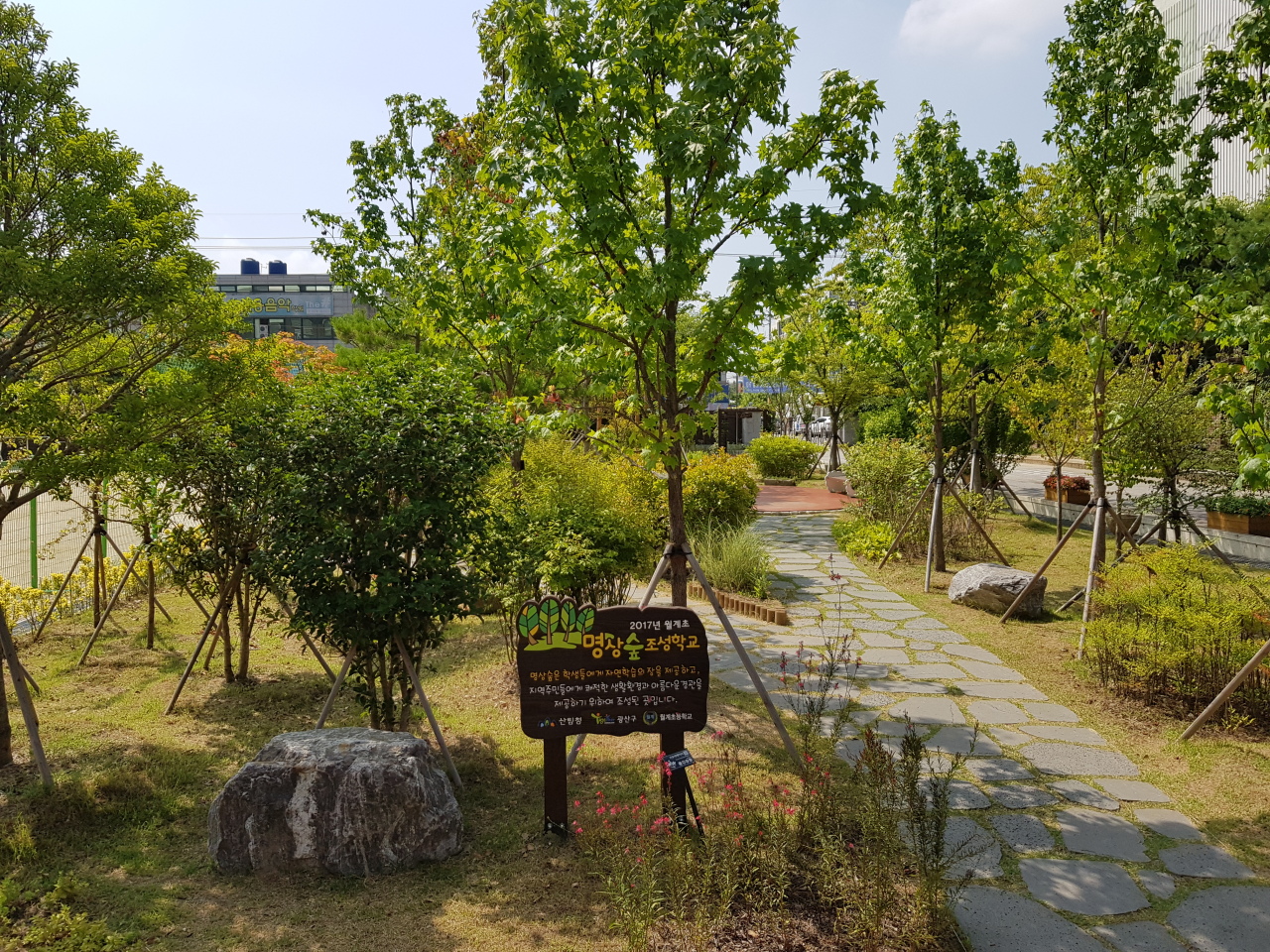School Forest Project promoting urban greenery turns 20
By Cho Hyee-suPublished : July 24, 2019 - 16:09
Boosting greenery in cities may seem like a difficult task. However, a project has been coming up with innovative solutions to the lack of green space for the past 20 years.
School Forest Project -- launched in 1999 through a collaborative effort between nongovernmental organization Forest for Life and sanitary product manufacturer Yuhan-Kimberly -- targets public schools in South Korea lacking green space on their school grounds.
By planting various types of greenery, such as trees and bushes, at the campuses, the project has given students, faculty and the regional community the opportunity to experience nature.
School Forest Project -- launched in 1999 through a collaborative effort between nongovernmental organization Forest for Life and sanitary product manufacturer Yuhan-Kimberly -- targets public schools in South Korea lacking green space on their school grounds.
By planting various types of greenery, such as trees and bushes, at the campuses, the project has given students, faculty and the regional community the opportunity to experience nature.

According to the Korea Forest Service, which has run the program since 2015, the project has transformed 1,770 public schools in two decades, covering some 15 percent of the 11,786 schools nationwide.
By region, 313 schools (17.7 percent) were located in Gyeonggi Province, followed by 200 schools in South Jeolla Province (11.3 percent) and 155 in Gangwon Province (8.8 percent).
The KFS highlighted the many benefits the project provides to schools and local communities.
Environmentally, the transformed grounds offer a space for the conservation of the local ecosystem, securing biodiversity by providing habitats for wildlife and preserving soil for underground water circulation.
The greenery also improves the air quality amid the ongoing fine dust problem in Korea. Data provided by the KFS showed that on average the concentration of dust particles at the sites were reduced by 25.6 percent and that of fine dust particles decreased a whopping 40.9 percent.
The green space also opens up new opportunities for students to learn about forest ecology and the importance of the environment. At the same time, they function as parks for residents, helping to integrate the local community, the KFS said.
Currently, local governments put up a public notice when applications for the School Forest Project are open. Officials will then evaluate the applications and conduct onsite reviews to select schools eligible for the project.
Each school will be provided with a budget of some 60 million won ($50,950), and the project takes a year to complete.
The KFS plans on securing more participation by local NGOs and companies to fund and expand the project. It will also find ways to draw citizen participation in the management of these small forests.
By Cho Hyee-su and Lee Kwon-hyung
(chohyeesu@heraldcorp.com) (kwonhl@heraldcorp.com)







![[Graphic News] More Koreans say they plan long-distance trips this year](http://res.heraldm.com/phpwas/restmb_idxmake.php?idx=644&simg=/content/image/2024/04/17/20240417050828_0.gif&u=)
![[KH Explains] Hyundai's full hybrid edge to pay off amid slow transition to pure EVs](http://res.heraldm.com/phpwas/restmb_idxmake.php?idx=644&simg=/content/image/2024/04/18/20240418050645_0.jpg&u=20240419100350)





![[From the Scene] Monks, Buddhists hail return of remains of Buddhas](http://res.heraldm.com/phpwas/restmb_idxmake.php?idx=652&simg=/content/image/2024/04/19/20240419050617_0.jpg&u=20240419175937)

![[KH Explains] Hyundai's full hybrid edge to pay off amid slow transition to pure EVs](http://res.heraldm.com/phpwas/restmb_idxmake.php?idx=652&simg=/content/image/2024/04/18/20240418050645_0.jpg&u=20240419100350)

![[Today’s K-pop] Illit drops debut single remix](http://res.heraldm.com/phpwas/restmb_idxmake.php?idx=642&simg=/content/image/2024/04/19/20240419050612_0.jpg&u=)